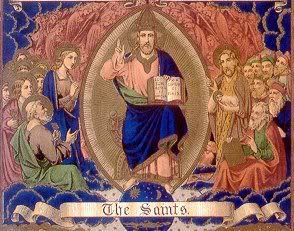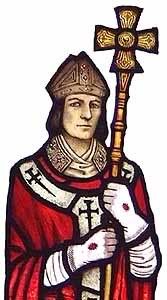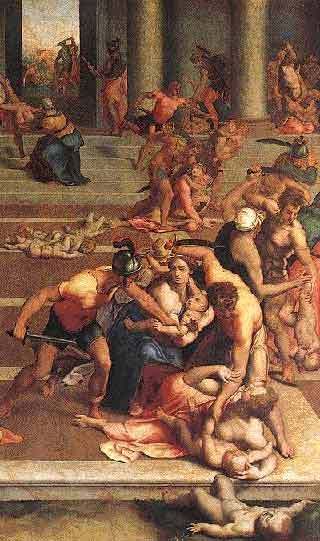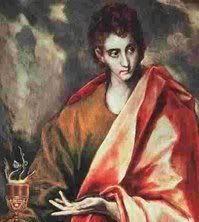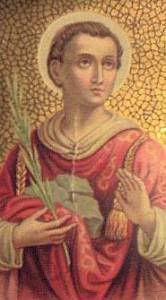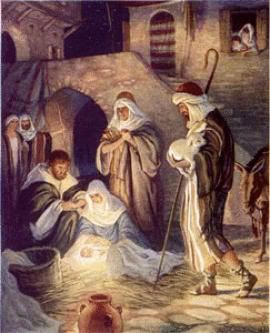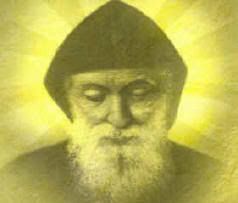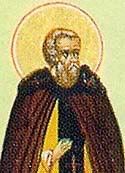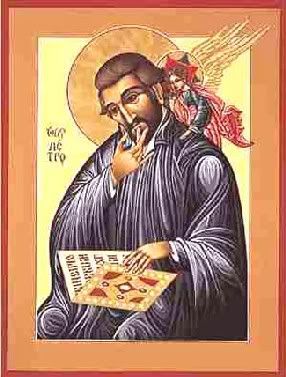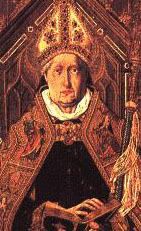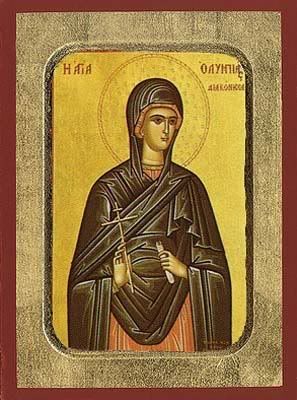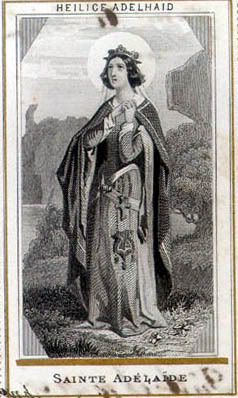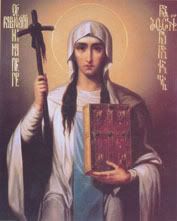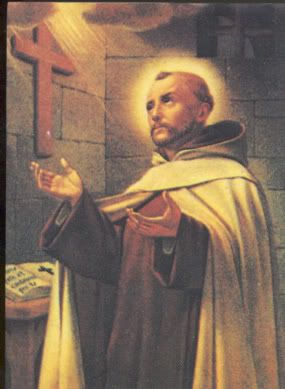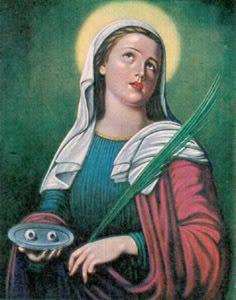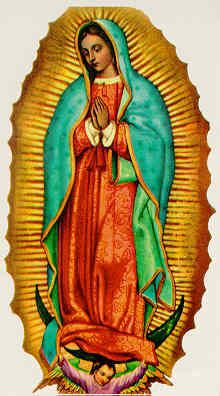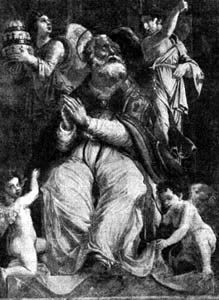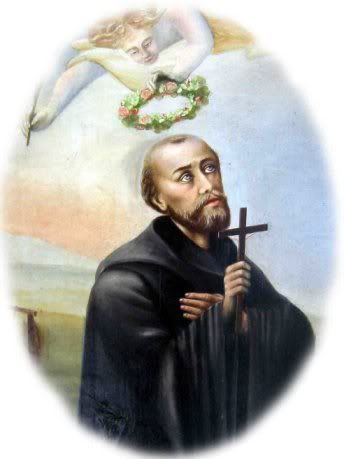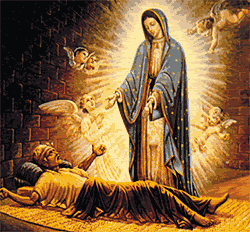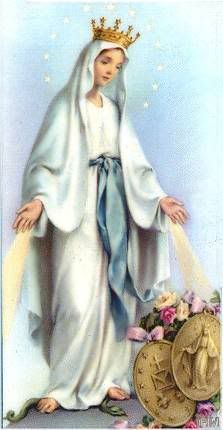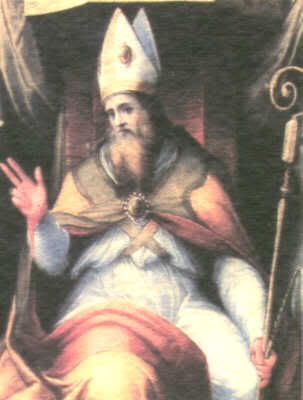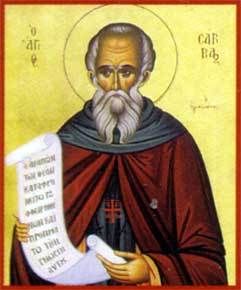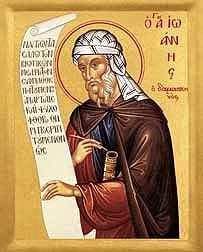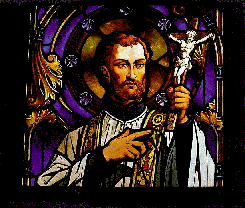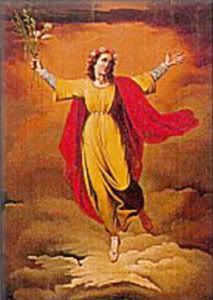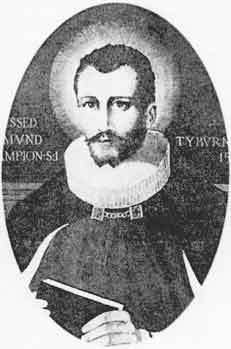DECEMBER 23
The current calendar lists two saints on December 23. Their stories are briefly presented here one after the other.

ST. JOHN OF KANTY
This Polish saint was born in 1390, the son of good country folk. Seeing how intelligent their son was, they sent him to the University of Krakow. He did well in his studies. Then John became a priest, a teacher, and a preacher. He was also well-known for his great love of the poor. Once he was eating in the university dining hall. At the beginning of the meal, he happened to see a beggar passing by the window. Immediately, he jumped up and brought the man his dinner.
Some people became very jealous of St. John's success as a teacher and preacher. They finally managed to have him sent to a parish as a pastor. Here, he put his whole heart into the new life. At first, however, things did not go well at all. The people did not particularly care for John, and John was afraid of the responsibility. He did not give up, however, and his efforts brought results. By the time he was called back to the university, the people of his parish loved him dearly. They went part of the way with him. In fact, they were so sad to see him go that he had to tell them: "This sadness does not please God. If I have done any good for you in all these years, sing a song of joy."
Back in Krakow, St. John taught Bible classes and again became a very popular teacher. He was invited to the homes of rich nobles.
Still, however, he gave everything he had to the poor and dressed very poorly himself. Once he wore an old black habit, called a cassock, to a banquet. The servants refused to let him in. St. John went home and changed into a new one. During the dinner, someone spilled a dish of food on the new cassock. "Never mind," said the saint with good humor, "my cassock deserves some food, anyway, because without it, I wouldn't have been here at all."
St. John lived to be eighty-three. Again and again during all those years he cleaned out everything he owned to help the poor. When people burst into tears on hearing that he was dying, he said, "Don't worry about this prison which is decaying. Think of the soul that is going to leave it." He died in 1473 and was proclaimed a saint by Pope Clement XIII in 1767.
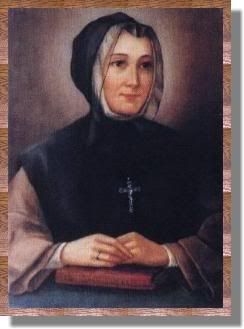
ST. MARGUERITE D'YOUVILLE
Marguerite was born in Quebec, Canada, on October 15, 1701. Her father died in 1708 and the family lived in poverty. Relatives paid her tuition at the Ursuline convent school in Quebec. Her two years at the boarding school prepared her to teach her younger brothers and sisters. Marguerite was gracious and friendly. She helped support her family by making and selling fine lace. In 1722, Marguerite married Francois D'Youville. It seemed like the marriage was going to be a truly happy one.
But Francois' real self came out as the months passed. He was more interested in making money than in being with his family. His job was illegal liquor trading. He left Marguerite alone with her two children and did not take care of them.
Francois died quite suddenly in 1730 after eight years of marriage. He left Marguerite with large debts to pay. A kind priest named Father du Lescoat gave her courage. He told her that she was loved by God. Soon she would begin a great work for God.
The prophecy would come true. Mother D'Youville took in a blind, homeless woman on November 21, 1737. This marks the beginning of a marvelous work of caring for the sick poor in hospitals. These hospitals would be run by the sisters of her new order. She and her first companions became known as the "Grey Nuns." Their religious habit was grey. The sisters took over the general hospital in Montreal. It was run-down and very much in debt.
People made fun of the sisters. What were they trying to do, anyway? But Mother D'Youville and her sisters did not lose heart. They worked, and built, and fixed. Above all, they welcomed everyone in need. No one was too poor or too sick to come to their hospital. In 1765, a fire destroyed the hospital, but Mother D'Youville and her nuns had it rebuilt in four years.
Marguerite's two boys became priests: Charles, pastor of Boucherville, and Francois, pastor of St. Ours. In 1769, Father Francois broke his arm. His mother hastened to take care of him. She spent five days at the rectory. Mother D'Youville was equally generous when an epidemic of smallpox spread through the Indian missions of Montreal. And during the Seven Years War between the French and British, she helped soldiers on both sides. She hid the British soldiers in the dark rooms of the convent cellar. There her sisters quietly nursed them back to health. Mother Marguerite D'Youville died on December 23, 1771. She was proclaimed a saint by Pope John Paul II on December 9, 1990. She is Canada's first Canadian-born saint.
